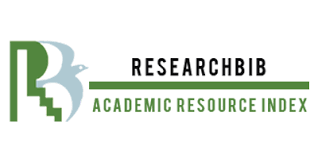HOW TECHNOLOGY IS CHANGING WORK AND ORGANIZATIONS
Keywords:
technology, work, organizational change, ubiquitous computing, disruptive technology.Abstract
Given the rapid advancements and increased reliance on technology, the impact of technology on work and employment is a crucial topic for scholars in the field of organizational psychology and organizational behavior (OP/OB). This article aims to analyze the current research on the effects of technology on work and organizations, including its progress, direction, and purpose. After reviewing significant technological breakthroughs, we explore the disruptive effects of emerging information and communication technologies. Additionally, we examine the extent and types of jobs affected by technological developments, which will inevitably result in significant worker displacement. To illustrate the influence of technology on work, work systems, and organizations, we present four widely used technologies: electronic monitoring systems, robots, teleconferencing, and wearable computing devices. In order to provide insights for OP/OB scholars regarding the effects of technology, we consider research conducted from four different perspectives on the role of technology in management. Furthermore, we analyze how this role is evolving in the emerging world of technology. Finally, we conclude by discussing approaches to six human resources (HR) areas that are supported by both traditional and emerging technologies. We identify research questions related to these areas that will have profound implications for both research and practice, and offer guidance for future research endeavors.
References
Aeppel T. 2014. Robots work their way into small factories. The Wall Street Journal, Sept. 18. pp. B1–2
Aeppel T. 2015. What clever robots mean for jobs: Experts rethink belief that tech always lifts employment as machines take on skills once thought uniquely human. The Wall Street Journal, Feb. 24. http://www.wsj.com/articles/what-clever-robots-mean-for-jobs-1424835002
Alge BJ. 2001. Effects of computer surveillance on perceptions of privacy and procedural justice. J. Appl.Psychol. 86:797–804
Alge BJ, Anthony EA, Rees J, Kannan K. 2010. Controlling A while hoping for B: deviance deterrence and public versus private deviance. In The Dark Side of Management, ed. L Neider, C Schriesheim, pp. 115–41.Charlotte, NC: Inf. Age Publ.
Alge BJ, Hansen SD. 2014.Workplace monitoring and surveillance research since “1984”: a review and agenda.See Coovert & Thompson 2014a, pp. 209–37
Alter S. 2013.Work system theory: overview of core concepts, extensions, and challenges for the future. J. Assoc.Inf. Syst. 14(12):72–121
Ball K. 2010. Workplace surveillance: an overview. Labor Hist. 51:87–106
Bandura A. 1997. Self-Efficacy: The Exercise of Control. New York: Freeman
Barley SR. 1986. Technology as an occasion for structuring: evidence from observation of CT scanners and the social order of radiology departments. Adm. Sci. Q. 31:78–108
Barley SR. 1990. The alignment of technology and structure through roles and networks. Adm. Sci. Q. 35:61–103
Barley SR. 2015. Why the Internet makes buying a car less loathsome: how technologies change role relations.Acad. Manag. Discov. 1:31–60
Barley SR, Meyerson DE, Grodal S. 2011. E-mail as a source and symbol of stress. Organ. Sci. 22(4):887–906
Barrett M, Walsham G. 1999. Electronic trading and work transformation in the London insurance market.Inf. Syst. Res. 10(1):1–22
Beal DJ. 2015. ESM 2.0: State of the art and future potential of experience sampling methods in organizational research. Annu. Rev. Organ. Psychol. Organ. Behav. 2:383–407
Bechky BA. 2003. Object lessons: workplace artifacts as representations of occupation jurisdiction. Am. J. Sociol. 109(3):720–52
Beniger JR. 1986. The Control Revolution: Technological and Economic Origins of the Information Society.Cambridge, MA: Harvard Univ. Press
Bessen J. 2015. Learning by Doing: The Real Connection Between Innovation, Wages, and Wealth. New Haven,CT: Yale Univ. Press
Blau PM, Falbe CM, McKinley W, Tracy PK. 1976. Technology and organization in manufacturing.Adm. Sci. Q. 21:20–40.







